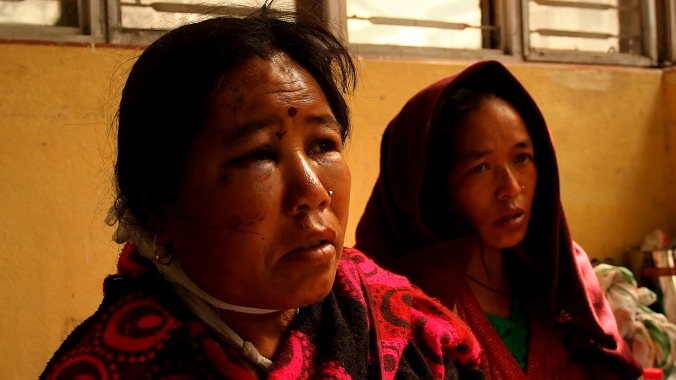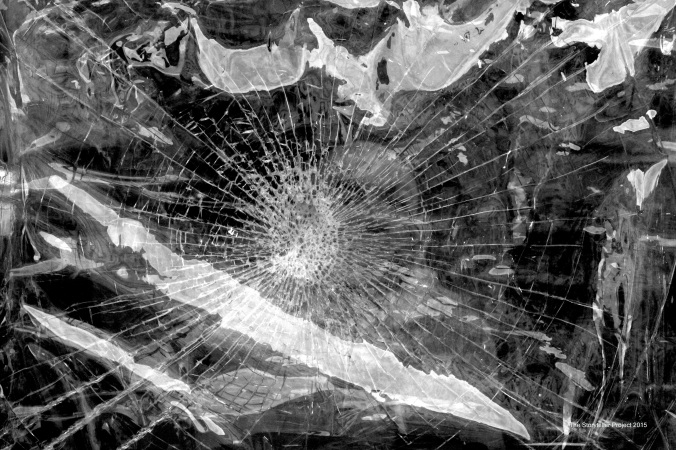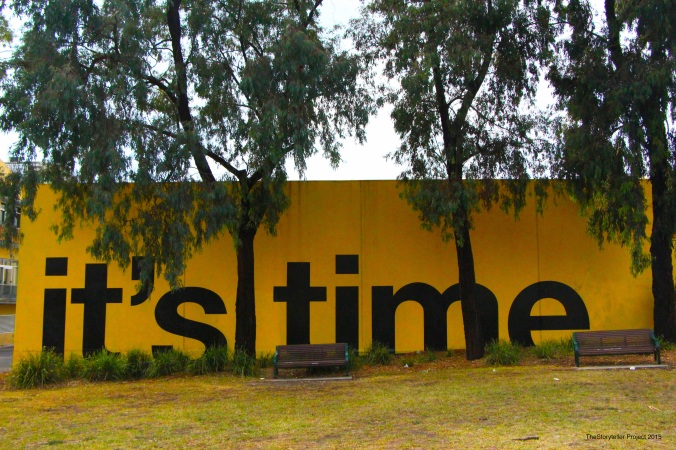Author Hamilton Pevec lives in Pokhara, Nepal with his Nepalese wife, Devika Gurung. Pokhara is about fifty miles and many hours’ driving time from the earthquake epicenter, Gorkha.
Gorkha Earthquake remote epicenter area relief
April 29th 2015
We gathered at Blue Sky Paragliding company headquarters in Pokhara, Nepal, to load four jeeps with relief supplies and try to organize ourselves.
The word coming out of the target area was that they needed supplies, but not people.
We loaded rice, tarps, tents, blankets, medicine, water and about eight people to help unload and load.
We hooked up with Karma Flights because they had already been in the area for a few days and they had established a relay distribution station. With them we could make sure our supplies got into the right hands.
The paragliding companies have all leapt in to help in this crisis.
We are an international group of locals: French, Canadian, American, British and Nepali all working together to see if we can get survival supplies into rural areas where villages are now rubble. We hit the road feeling optimistic and slightly apprehensive. We knew the roads were bad and now it was raining.
We had heard stories that support groups had been attacked by desperate villagers,raiding the trucks and becoming violent with the volunteers.
We loaded our very old Mahendra truck with 120 kg rice, 25L fuel, 10 tarps,10 blankets, 15 boxes of water, shovels and picks.
Not long into our journey we began to fishtail; something was wrong with our steering. A quick road side fix and atop up of fluids put us back on the highway cautiously.
We reached Mugline and stopped to buy more blankets and realized we had missed our turn for Gorkha, by 7 Km. Back tracking, we stopped to buy more blankets.
We saw lots of relief trucks and media vehicles on the road. The traffic was thick and everyone drove too fast. As we crested a small hill to pass through a gate, the gears would not
engage.
Robyn, our driver, looks out the window and yells “Get out now!” I jump out to and see that the back right wheel was sticking out 1.5 feet, just barely on the truck. We put stones behind the other wheels, a few small cars passed us, the big buses and trucks could not.
A mechanic was on the scene within two minutes, and we had the truck jacked, wheel removed in 10 and by 15 minutes the new part was installed, the wheel back on.
During this time an angry German film crew criticized us on our poor choice of places to break down. Members of International Search and Rescue were also in the line up to get by.
Moving again, the sun was setting over Gorkha, we were surprised to see very little damage in the main township, almost none at all.
Asking for the road to Chanaute, to our dismay we missed our turn again, we had to go all the way back to where we broke down about 10 Km.
We got on the right road as it got dark,now finally heading into the back country. The road slowly yet surely turned into a 4×4 mud bath. We had to keep one person sitting in the back to make sure none of the supplies fell out.
It was a grueling 4 hours, but quite normal for traveling in Nepal.
We arrived at the supply relay station about 10:30pm, set up the tarps just in time for a torrential down pour.
The French being French, brought some fancy stinky cheese and fresh home made bread. We picnicked in the rain as we discussed the distribution strategy for the next day.
The earth shook, and Micole,the Nepali independent aid worker reassured me that is was just the landslides.
April 30th 2015, Up before dawn the rain continued to pour, we knew in these conditions that we could not get out with our truck.
The relay station was set up 100 meters from a massive landslide that blocked one of the remote access roads. The villagers started showing up around 6AM.
They walk down from the steep mountain-side villages that have been cut off by landslides and floods. I could see the slide areas all around us.
The issues with distribution became quite obvious immediately: people wanting more than their share, families sending different people to collect, people fighting over supplies and how they should be distributed.
None of the groups, like us, at this location were professional relief groups. But Karma Flights had been there for five days and slowly figured out a system. That didn’t stop the infighting.
It was like watching directors butting heads, “My way! “No, my way!”
I suppose it is to be expected because it takes a director to even try something like this. The groups gathered at this location were a mix of paragliding companies, independent community action groups, and individuals.
The only doctors on site were four foreigners who happened to be in Nepal, two left that day.
Micole told me that she had to play doctor in the beginning recalling some gruesome stories of mis-education when dealing the injured villagers.
One wound was caked in toothpaste, another one packed full of powdered Paracetamol. She spent a lot of time just cleaning and dressing wounds.
By 10AM, 200 villagers were at the supply station, many having come a few times that morning.
One aid worker was very upset about efforts not being co-ordinated. “1000 people are just up the road with nothing, crying, and you are here giving to all these people who already came yesterday.”
Villagers were sneaking around the ropes just grabbing whatever they could, kids were pulling up stakes from the tents of the aid workers, I saw another villager role up the tarp we slept
on and pack it away very quickly.
It was clear they wanted the tarps more than anything else.
Everyone was sleeping in shelters, even if their homes still stood. They would not sleep alone, in some cases 5-7 families would all be sleeping in one shelter, for fear of being
alone. Which makes you wonder where are all the tarps going?
Because the destroyed villages are up on the mountain sides, they cannot be reached by the aid workers directly, adding to the already extreme challenge of trying to help everyone fairly.
One local guy, Sanjay, was helping with the relief and offered to take me to his village, just 30 minutes walking uphill.
“Everything is broken, all houses destroyed” he told me.
On the way we passed over a very damaged suspension bridge and crossed three landslides. Nine out of ten houses I saw on the way were collapsed. Gunchoktar Village was devastated.
Sanjay took me to his ruined house “ My sister in law was killed here, I ran away,
that why I am alive.”
He explained to me most of the village animals were killed as well. “They
will begin to stink and this very bad,” he continued, “we put all our dead family and villagers in one hole, we burn them later when we can get them down the hill.”
When I returned to the supply station, it had become more crowded,hundreds of people, some were there to watch.
By now, it had not rained for a couple of hours and it was getting pretty hot. We decided to leave.
We had one local guy, about 20 years old, come with us. He wanted to get back to his family in
Nepalganj.
In 100 yards we got stuck deep in the mud. It was going to be a crazy ride out!
Many vehicles, buses, trucks, relief workers, media, many people were coming into the area and this was making a bad road worse.
At a land slide area,there was a bus that would not pass because the road was too narrow and the
cliff side was weak.
With 20 vehicles waiting to pass, only one guy was digging, so we mobilized and got more people involved. I saw two military guys just watching us work and yelled at them in Nepali. They hustled and got to work.
At least one of them did.
When I asked why the other wasn’t working, he pointed to his gun.
We had eight people push this bus pass, it began to slide towards the cliff and just
barely made it by a few inches and a lot of good karma.
It was a long, muddy and dangerous but we made it. A few times it made me think, everyone is telling me to be safe, but trying to help at all is unsafe.
We stopped to rest in a small grove, I unloaded some of my gear to back up my shots
and recharge my phone, the whole ride out I was emailing the first pictures to
come out of the area.
I reloaded my gear, packed everything away nicely. We dropped the 20 year old guy off at his intersection and we continued on to Pokhara.
I was mentally preparing myself for a long night of editing and uploading to make my deadline.
Completely exhausted and drained of all power we reached Lakeside, I unloaded my gear and repacked to go home.
My camera bag was missing.
My heart sunk, I wanted to vomit and scream. “This can’t be happening.
All my batteries, my lenses, my SD cards, gone, and with them any chance to continue the coverage of this disaster.
I had my camera around my neck and a single battery, thank God.
Bad news is we cannot open a Nepali account here, the government as taken all the new bank accounts that were opened since the 25th to lend to their own efforts, but this feels like the ultimate corruption move. its pretty sad, actually and a sign of how this will go for the next few years.
It makes me feel like our efforts our now that much more important.
Anyone wanting to support Hamilton’s aid efforts with Blue Sky Paragliding or to donate to help replace his camera gear can Paypal fauxreel@gmail.com .








